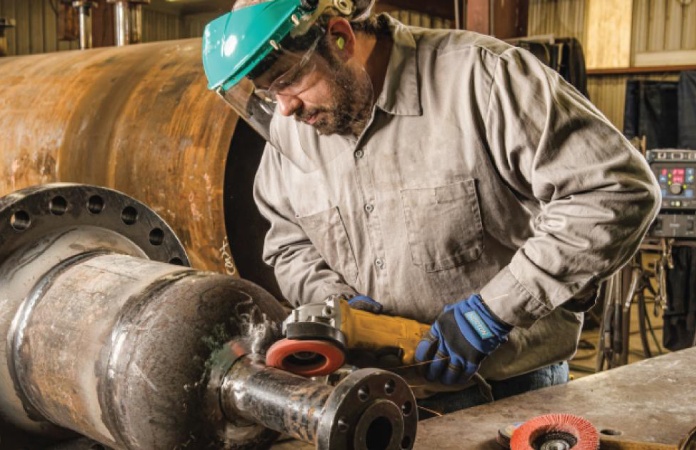Flap discs are a popular choice in industries that require grinding, sanding, and finishing metal surfaces. People love using them because they work well, save time, and are simple to handle. However, like any tool, they can present challenges if not used or maintained properly. Many users encounter issues with flap discs that can hinder their performance and lead to frustration. Understanding these problems and their solutions can ensure better results and a longer lifespan for your flap discs. The key is to identify the root causes of these challenges and implement practical fixes. This approach not only enhances efficiency but also reduces unnecessary downtime.
Excessive Wear and Tear
One of the most common problems users face with flap discs is premature wear. Flap discs are designed to last, but they can wear out quickly if used incorrectly. Applying too much pressure or using the wrong disc for the material are two main reasons. For example, using a flap disc designed for aluminum on harder metals can reduce its life significantly. Another factor is improper storage, which can expose the discs to moisture and lead to degradation. To fix this, always select the right type of flap disc for the material at hand. Proper storage in a dry environment also helps maintain their quality.
Poor Surface Finish
A poor surface finish is another frequent complaint when using flap discs. This issue often arises from using the wrong grit size. A grit that is too coarse can leave scratches, while one that is too fine may not remove material effectively. Using the disc at the wrong angle can cause it to wear unevenly over time. For a smoother finish, use a finer grit size for finishing tasks and ensure the disc is worn evenly by maintaining a consistent angle during use. Regular inspection of the disc’s condition can also help identify wear patterns early.
Disc Glazing
Glazing occurs when the surface of the flap disc becomes shiny and smooth, reducing its cutting ability. This is typically caused by excessive heat buildup during use. Overheating can result from applying too much pressure, working on a material for too long, or using a disc that is not suitable for the application. To fix this problem, reduce the pressure and allow the disc to cool between uses. Selecting a flap disc with a better heat-resistant design can also minimize the chances of glazing.
Disc Breakage
Flap disc breakage is a serious issue that can pose safety risks. This often happens when the disc is used at higher speeds than recommended or when it comes into contact with sharp edges. In some cases, using damaged or expired discs can lead to sudden breakage. To avoid this, always check the disc for any cracks or visible damage before use. Ensure that the disc’s maximum RPM rating matches the speed of the tool. Wearing appropriate personal protective equipment, such as safety goggles, further minimizes the risks associated with breakage.
Inconsistent Performance
Inconsistent performance is another issue that frustrates many users. This can stem from using low-quality discs or failing to clean the workpiece properly before starting. Debris, oil, or rust on the surface can interfere with the disc’s operation. Another factor is uneven pressure applied during grinding, which can cause uneven wear. To ensure consistent results, invest in high-quality flap discs and clean the workpiece thoroughly. Maintaining steady pressure while grinding also improves performance and prolongs the disc’s life.
Overheating of Workpiece
Overheating the workpiece is a common problem, especially when working on sensitive materials. Excessive heat can lead to warping, discoloration, or even damage to the material being worked on. This often occurs when the disc is used at too high a speed or with too much pressure. To prevent this, adjust the speed of your tool to match the material and reduce pressure during use. Cooling techniques, such as using water or taking breaks between grinding, can help keep the temperature under control.
Flap discs are essential tools for many grinding and finishing tasks, but they can present challenges if not handled correctly. Issues like excessive wear, poor surface finish, and glazing can hinder their efficiency, while more serious problems like breakage can pose safety concerns. By understanding these common problems and their solutions, users can maximize the performance and lifespan of their flap discs. Proper selection, storage, and usage practices are crucial to achieving consistent and safe results. When used and maintained properly, flap discs can provide reliable performance and excellent surface finishes, making them a valuable addition to any workshop.
